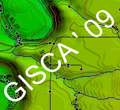
Sunday, October 25th, 2009
The HP – Press Event 2009 was recently held in Barcelona, Spain. The two-day event included a tour of the Institute of Advanced Architecture (Iaac) in the center of the city accompanied by formal presentations from members of the HP Research Print facilities in nearby San Cugat together with a tour and presentations at those

Sunday, October 18th, 2009
As humans, we have an innate and natural tendency to establish patterns and associations in our environment. Consider for a moment, the capability of the human brain to “process millions of visual, acoustic, olfactory, tactile, and motor data, and…the astonishing ability to learn from experience, generalize from learned rules, recognize patterns, and make decisions”.

Tuesday, October 13th, 2009
This topic was addressed in a workshop called “Putting complexity to work – supporting the Practitioners” organised by The abaci Partnership on 24 September 2009 as part of the European Conference on Complex Systems (ECCS 2009) held at the University of Warwick, UK. The Workshop explored novel approaches for dealing with the complex spatial realities
Sunday, October 11th, 2009
Lars Brodersen has written a book that describes what geocomunucation means and what it involves. In his view, geocommunication is much different than cartography alone. In this paper, we will set out some of the results and findings. We have attempted to identify a number of trends and to indicate what their significance may be

Monday, September 28th, 2009
INTERGEO was held in Karlsruhe, Germany last week under sunny skies allowing for the 15,000 in attendance to participate in both indoor and outdoor displays of the latest geospatial technologies developed by international manufacturer’s from 30 countries. At 25,000 square meters, INTERGEO remains one of the largest geospatial events on the planet.

Saturday, September 12th, 2009
Good planning is critical to achieving sustainability. The success of international, national, regional, and organizational plans for climate resiliency, energy management, supply chain optimization, facility management, and transportation efficiency depend on a defined purpose, need, and process to achieve sustainable performance.

Friday, September 11th, 2009
Antipolo City is located in the northern half of Rizal Province, which is within the eastern boundary of metropolitan Manila in the Philippines. Antipolo City is the second largest city in Rizal Province, with a total land area of 38,575 hectares. The topography is rugged, rising from the coastal plain at elevations of about 6

Sunday, September 6th, 2009
If all the world’s best GIS-minds were brought together and put in a room (with plenty of CocaCola and pizza supply), what could happen? Could they construct ‘a pyramid with a pumping heart on the moon’? Could they construct something that would stand for another 5000 years (as the pyramids)? Could they construct something that

Friday, September 4th, 2009
The 3rd successful Central Asia GIS Conference was concluded by conference chairs Akylbek Chymyrov and Josef Strobl from the Austria-Central Asia Centre for GIScience on August 28 at the University of Construction, Transportation and Architecture in Bishkek, Kyrgyz Republic. The two-day conference program brought together speakers from Central Asian countries with their counterparts from Central

Sunday, August 30th, 2009
The interaction between science and technology is inevitable. Scientific studies produce information and cause advances in technology while on the other hand technological progress provides us better circumstances on scientific research. Today data deluge is a growing concern in Earth sciences and providing a solution for the analysis of these upcoming data is an extensive